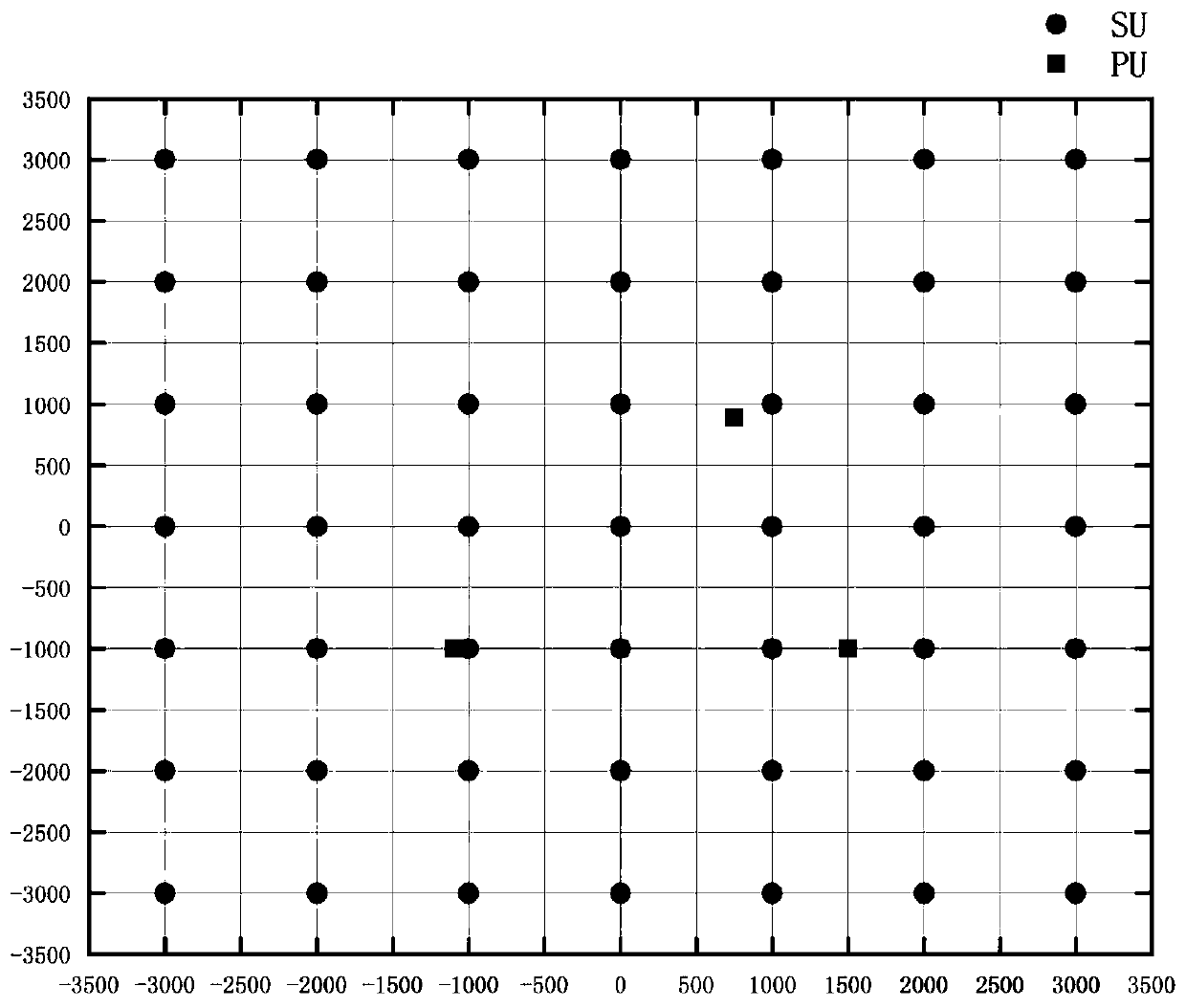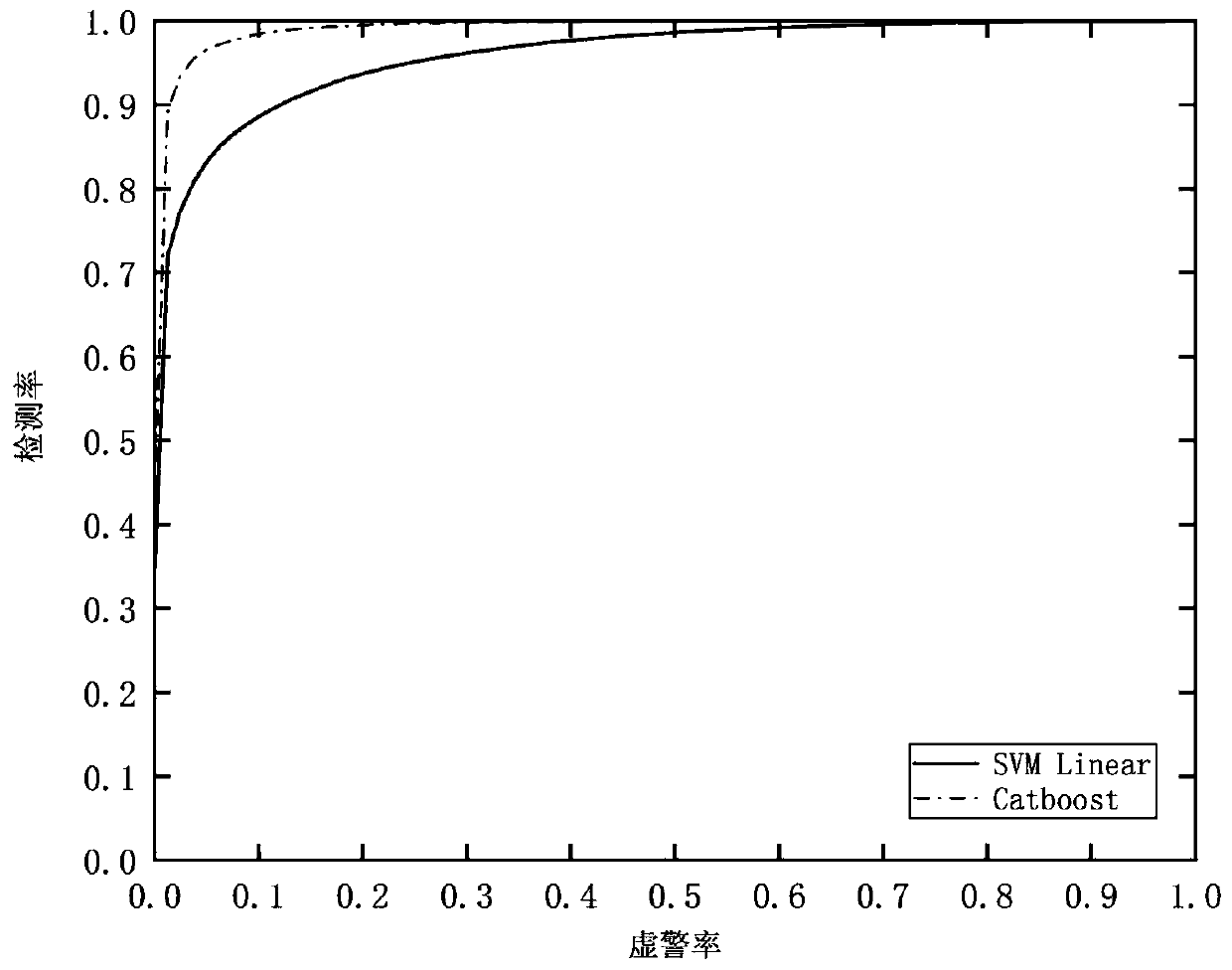Channel environment self-adaptive spectrum sensing method based on Catboost algorithm
A spectrum sensing and channel environment technology, applied in the field of channel environment adaptive spectrum sensing based on Catboost algorithm, to achieve the effect of reducing the risk of misclassification and strong practicability
- Summary
- Abstract
- Description
- Claims
- Application Information
AI Technical Summary
Problems solved by technology
Method used
Image
Examples
Embodiment
[0048] In order to verify the availability and feasibility of the present invention to solve the spectrum sensing problem under the cognitive wireless network based on the Catboost algorithm, a simulation experiment is carried out and the algorithm performance is compared with the SVM algorithm. The simulation parameters are set as follows: the sensing time period τ is 100μs, the bandwidth is 5MHz, the noise power spectral density is -174dBm, the transmit power of each PU is 200mW, the path loss coefficient is 4, the multipath fading and shadow fading coefficients are both 1, each The probability of a PU going online is 0.5. The kernel function of SVM is chosen as the linear kernel function, because the excellent performance of the linear kernel function in this problem has been proved in the previous work. The training vector is 160 and the test vector is 640. The ratio of positive and negative samples is 7:1. figure 2 In the 7*7 cooperative spectrum sensing system structur...
PUM
 Login to View More
Login to View More Abstract
Description
Claims
Application Information
 Login to View More
Login to View More - R&D
- Intellectual Property
- Life Sciences
- Materials
- Tech Scout
- Unparalleled Data Quality
- Higher Quality Content
- 60% Fewer Hallucinations
Browse by: Latest US Patents, China's latest patents, Technical Efficacy Thesaurus, Application Domain, Technology Topic, Popular Technical Reports.
© 2025 PatSnap. All rights reserved.Legal|Privacy policy|Modern Slavery Act Transparency Statement|Sitemap|About US| Contact US: help@patsnap.com



